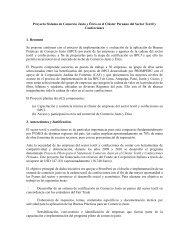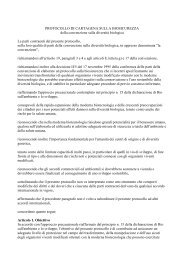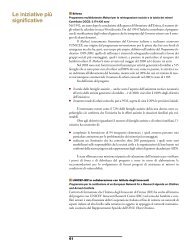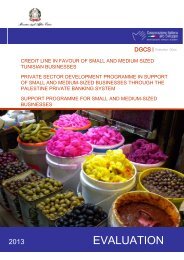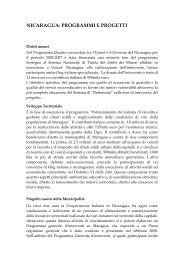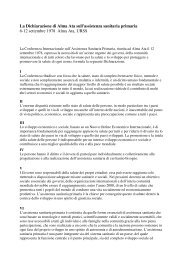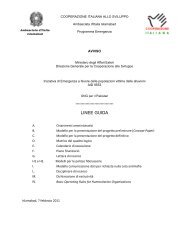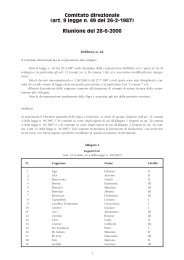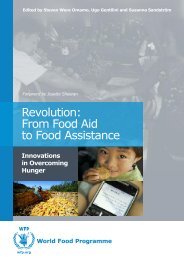FRONTESPIZIO - Cooperazione Italiana allo Sviluppo
FRONTESPIZIO - Cooperazione Italiana allo Sviluppo
FRONTESPIZIO - Cooperazione Italiana allo Sviluppo
You also want an ePaper? Increase the reach of your titles
YUMPU automatically turns print PDFs into web optimized ePapers that Google loves.
66 Carlo Resti, Yohannes TadesseHRH will need to tie in to these reforms. Thus, coherent and well-formulatednational HRH policies and strategies are required for giving direction onHRH development and on how HRH relate to health sector reform issues(e.g. decentralization, public-private mix), the scaling-up of priority interventions,poverty reduction strategies, and training methodology approaches.In many countries the development of coherent HRH planning approachesis of low priority and respective planning departments are badly equipped,both, technically and personnel-wise. Recently it was pointed out that evencountries such as Australia, France, Germany, Sweden and the UnitedKingdom have a partial approach to planning of the health sector workforceand that the relationships between different categories of health professionsis ignored. More specifically, nurse workforce requirements for addressingdisease patterns of the population are neglected.The socio-political and economic situation of a country will largely determinehuman resource constraints for achieving the MillenniumDevelopment Goals. Many factors will influence in an important waywhether and where health professionals will practice: e.g. political stability,priority accorded to social sectors, the overall policy framework, governance,and accountability.Emigration of medical professional illustrates this. Recruitment policies, immigrationlaws and regulations in better off countries induce whether thereis a demand for health professionals in high-income countries. On the otherhand, living conditions in a low-income country will determine whetherhealth staff is encouraged to leave the country. With various high-incomecountries such as the USA, UK, France having a high demand for health professionalstrained outside their country, there is a growing concern that theyabsorb large numbers of health staff from low- and middle income countries.For example, it is reported that the US is short of several hundred thousandnurses and that the high demand for medically trained staff is not likely to bereversed in the coming years. In contrary, for Africa it is estimated thataround 23.000 qualified academic professionals emigrate annually or forGhana it is estimated that over 50% of doctors having graduated are livingand practicing outside the country.Unless there is no possibility to address at the same time pull factors of migrationin high income countries and push factors in low-income countries,investments in medical and nursing training are likely to be jeopardized. Itwill be crucial to elaborate and implement well balanced and sound nationalretention strategies.





